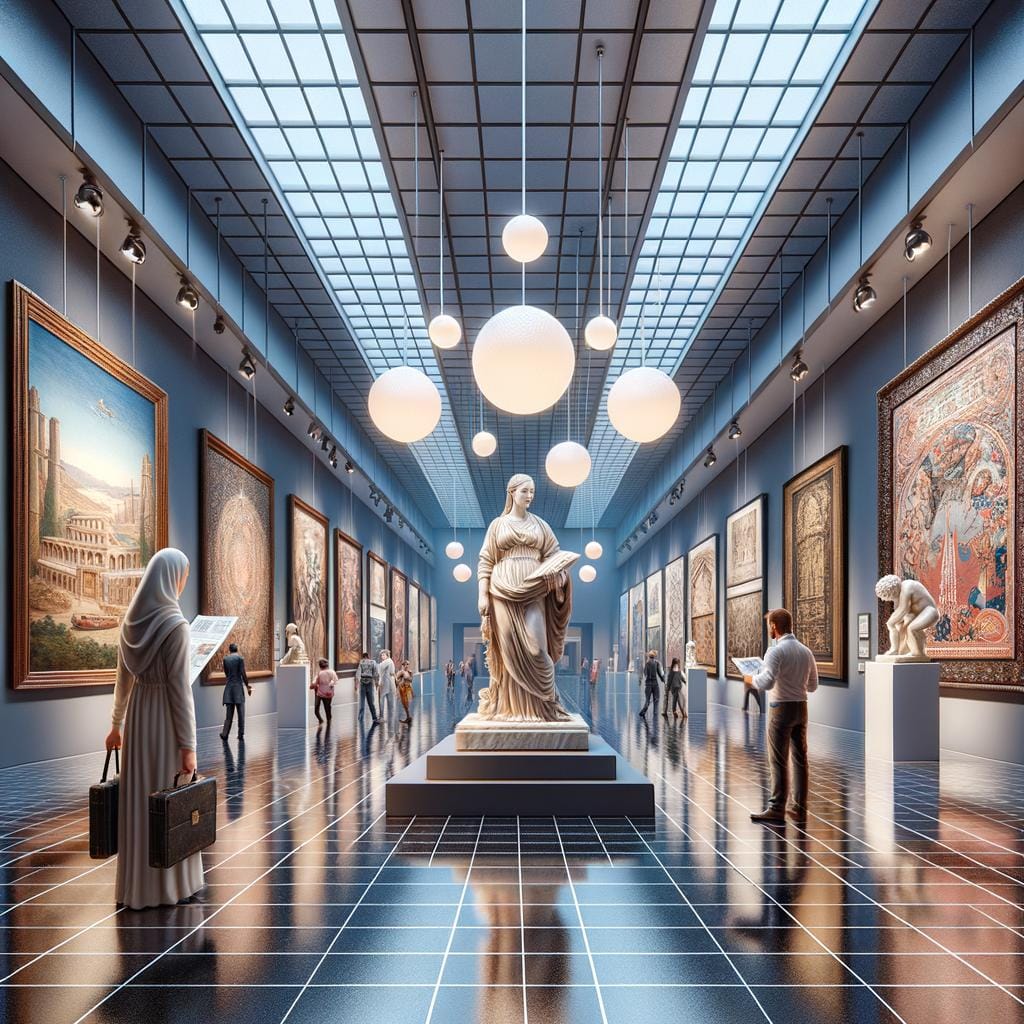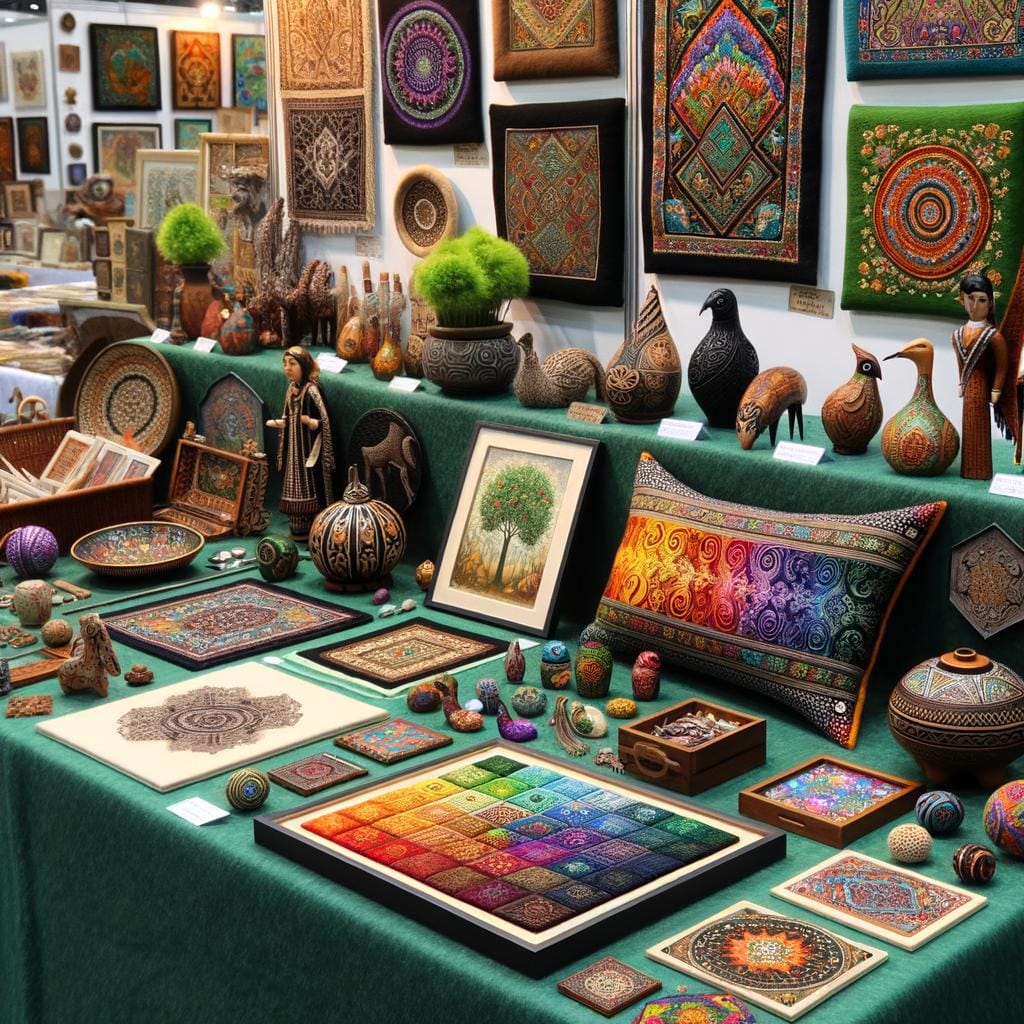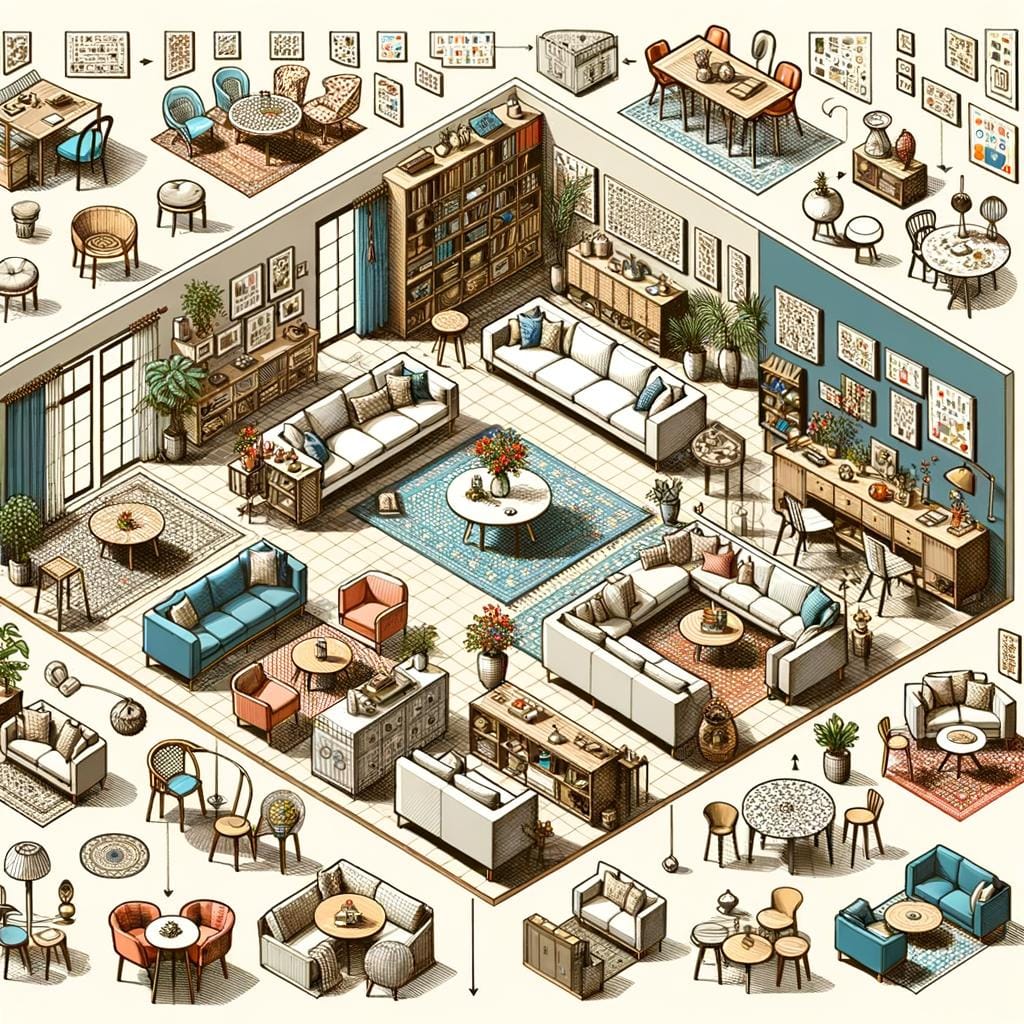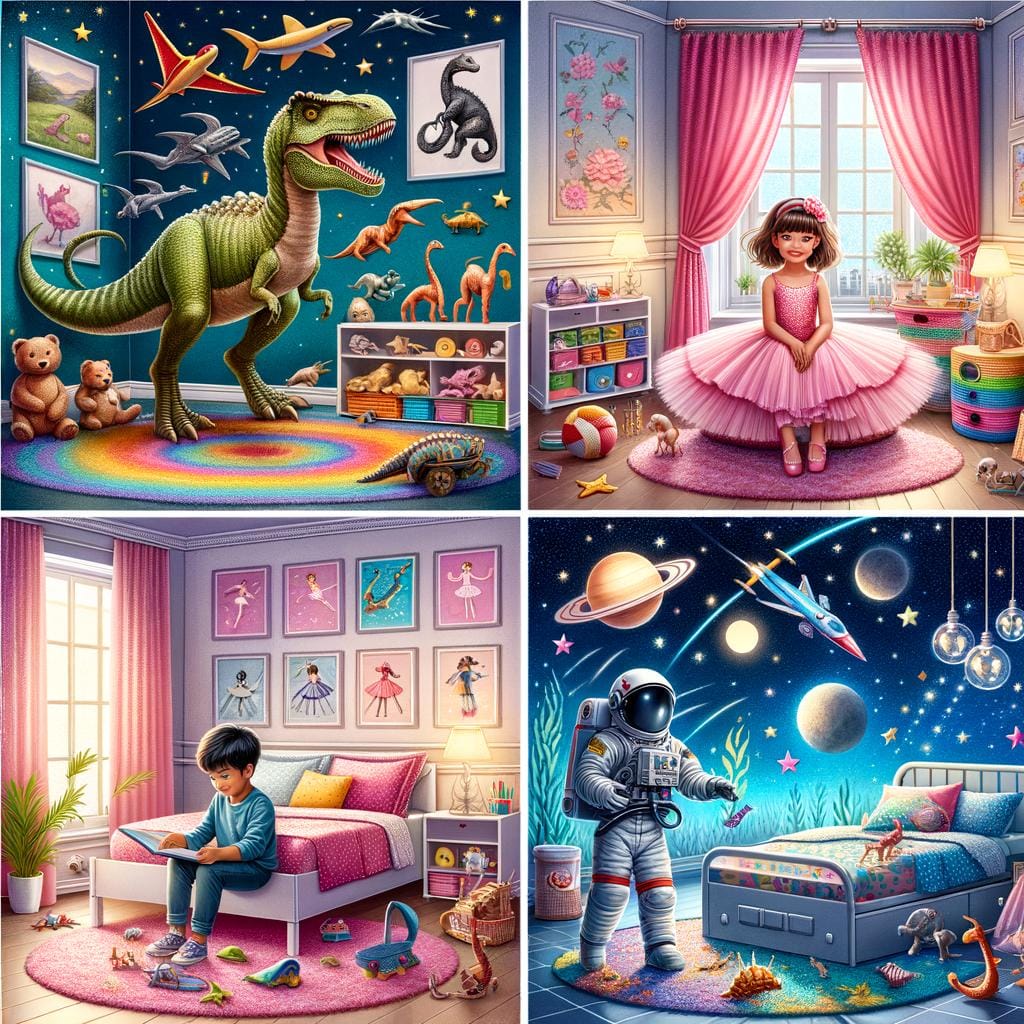Art display organization plays a crucial role in creating a captivating experience for visitors in galleries and exhibitions. The meticulous arrangement of artworks can greatly influence how they are perceived and appreciated by viewers, highlighting their beauty and significance. From traditional hanging systems to modern digital displays, the way art is presented can make a significant difference in how it is received.
Proper art display organization not only adds aesthetic value to the overall exhibition but also enhances the storytelling aspect of the artwork. By strategically arranging pieces based on themes, styles, or periods, curators can guide visitors through a visual narrative that invokes emotions and prompts contemplation. This careful curation can transform a collection of artworks into a cohesive and impactful showcase.
In this article, we will delve into the importance of art display organization, exploring its benefits for both artists and audiences alike. We will examine different types of art display systems, offer practical tips for effective organization, showcase successful case studies from renowned galleries, address common challenges faced in curating exhibitions, and highlight innovative trends shaping the future of art display organization.
Through this exploration, we aim to underscore the vital role that proper organization plays in the world of art and its continued evolution within the creative community.
Benefits of Art Display Organization
Proper organization of art displays in galleries and exhibitions plays a crucial role in enhancing the overall viewing experience for visitors. By thoughtfully arranging and presenting artworks, curators can create a cohesive and engaging environment that allows viewers to fully appreciate the pieces on display. Here are some key benefits of effective art display organization:
- Enhanced Visual Appeal: A well-organized art display can create a visually striking presentation that captures the attention of visitors. By strategically grouping artworks based on themes, colors, or styles, curators can create visual narratives that draw viewers in.
- Improved Accessibility: Organizing artwork in a clear and logical manner makes it easier for visitors to navigate through the exhibition space. Clear signage, labels, and information panels can help guide viewers through the gallery, making it easier for them to understand the context and significance of each piece.
- Enhanced Understanding: Properly organized art displays can also enhance visitors’ understanding of the artists’ intentions and creative process. By providing context and background information alongside each artwork, viewers can gain insights into the artistic influences, techniques, and concepts behind the pieces on display.
Incorporating effective art display organization techniques not only benefits visitors but also contributes to the overall success of an exhibition. By creating engaging and informative displays, galleries can attract a wider audience and foster a deeper appreciation for art among visitors. As technology continues to advance, new innovations in art display organization are constantly emerging, offering exciting possibilities for how artwork is presented and experienced by audiences.
Types of Art Display Systems
Art display organization is a critical aspect of galleries and exhibitions, ensuring that the artwork is presented in a visually appealing and coherent manner. One of the key benefits of proper art display organization is enhancing the viewing experience for visitors. By structuring the gallery space effectively and arranging the artwork thoughtfully, visitors are able to engage with the pieces more deeply and appreciate them in the intended context.
There are various types of art display systems and methods used to organize and present artwork in galleries and museums. Some common systems include grid displays, salon-style hanging, thematic grouping, chronological arrangements, and interactive installations. Each system serves a specific purpose depending on the nature of the exhibit and the characteristics of the artwork being displayed. By understanding these different methods, art display organizations can create dynamic and engaging spaces for viewers to explore.
One effective way to ensure successful art display organization is to consider the relationship between individual pieces within an exhibit. Curators and artists can use techniques such as size variations, color schemes, lighting effects, and spatial arrangements to create cohesive displays that draw viewers in.
Additionally, incorporating elements of storytelling or thematic connections can further enhance the overall impact of the exhibition. By paying attention to these details, art display organizations can create memorable experiences for visitors that go beyond simply showcasing artworks.
| Art Display Systems | Description |
|---|---|
| Grid Displays | Arranging artwork in a regular grid pattern for a clean and organized look |
| Salon-Style Hanging | Hanging artworks close together from floor to ceiling for a dynamic presentation |
| Thematic Grouping | Grouping artworks based on themes or subjects for a cohesive narrative |
Tips for Effective Art Display Organization
Proper organization of artwork plays a crucial role in creating a visually appealing display that enhances the overall viewing experience for visitors. Curators and artists must pay close attention to how they arrange and present pieces to effectively communicate the artistic message. Here are some practical tips for effective art display organization that can help curators and artists create captivating exhibitions:
Consider the Space
When planning an art display, it’s essential to consider the physical space where the exhibition will take place. Take into account the size of the walls, lighting conditions, and how visitors will navigate through the gallery. Make sure there is enough breathing room between each piece of artwork to allow viewers to appreciate each individual piece without feeling overwhelmed.
Use Consistent Themes or Visual Elements
To create a cohesive and harmonious art display, consider using consistent themes or visual elements throughout the exhibition. This could be based on color palettes, subject matter, or artistic styles. By establishing a connection between different pieces of artwork, you can guide visitors through a curated experience that tells a cohesive story.
Experiment With Different Layouts
Don’t be afraid to experiment with different layouts when organizing your art display. Play around with arrangements, such as grid layouts, salon-style hangings, or thematic groupings. By changing up the layout, you can create dynamic visual interest and highlight different aspects of each artwork. Remember to step back periodically to view the display from a visitor’s perspective and make adjustments accordingly.
By following these practical tips for effective art display organization, curators and artists can create visually appealing displays that captivate audiences and enhance their understanding and appreciation of art. The way in which artwork is presented can significantly impact how it is perceived by viewers, making thoughtful organization an essential aspect of any successful exhibition project.
Case Studies
Art display organization plays a crucial role in the presentation of artwork in galleries and museums. By strategically arranging pieces, curators can create visually engaging and impactful displays that capture the attention of visitors.
This not only enhances the overall viewing experience but also ensures that each artwork is given the appropriate space and context to shine. Successful art display organization requires careful planning, attention to detail, and a keen understanding of how to best showcase each piece within a larger collection.
One example of exemplary art display organization can be seen at the Louvre Museum in Paris, France. The museum’s layout allows for a seamless flow of visitors through its vast collection, ensuring that every artwork receives adequate attention without feeling crowded or overwhelming. The curators at the Louvre have expertly curated exhibitions that highlight both individual masterpieces and thematic connections between different pieces, creating a cohesive and engaging narrative for viewers to follow.
Another notable case study is the Museum of Modern Art (MoMA) in New York City. MoMA is renowned for its innovative approach to art display organization, often incorporating multimedia elements, interactive exhibits, and unconventional presentation methods to challenge traditional notions of how art should be showcased. By pushing boundaries and embracing new technologies, MoMA continues to captivate audiences while redefining the possibilities of art exhibition design.
| Louvre Museum | Museum of Modern Art (MoMA) |
|---|---|
| Exemplary layout for visitor flow | Innovative approach with multimedia elements |
| Careful curation highlighting thematic connections | Interactive exhibits challenging tradition |
Challenges of Art Display Organization
Organizing and curating art exhibitions is a complex and multifaceted task that requires attention to detail, creativity, and a deep understanding of the artwork being displayed. However, despite the careful planning and execution involved in art display organization, there are several common challenges that can arise during the process. Here are some of the key issues faced by art display organizations:
- Limited space: One of the most significant challenges faced by art display organizations is the constraint of limited space in galleries and exhibition venues. Curators often have to work within strict spatial boundaries, making it difficult to adequately showcase all pieces of artwork effectively.
- Lighting and environmental factors: Ensuring proper lighting and maintaining optimal environmental conditions, such as temperature and humidity levels, are crucial for preserving artworks. However, achieving the ideal lighting setup and climate control can be challenging, especially in older or unconventional exhibition spaces.
- Accessibility and flow: Another challenge in art display organization is creating a cohesive flow within the exhibition space that allows visitors to navigate through the artworks seamlessly. Balancing accessibility with an engaging experience can be tricky, particularly when dealing with a diverse range of art mediums and styles.
Despite these challenges, art display organizations can overcome them by implementing strategic planning, innovative solutions, and effective communication among team members. By addressing these common issues proactively, curators and artists can create captivating displays that not only highlight the artwork but also provide a memorable experience for visitors.
Innovations in Art Display Organization
Digital Display Systems
With the advancement of technology, digital display systems have become increasingly popular in the art world. These systems allow for interactive and dynamic ways to showcase artwork, providing a more engaging experience for visitors.
Digital screens, projectors, and virtual reality headsets are just a few examples of how technology is changing the way art is displayed in galleries and museums. The ability to digitally manipulate images, provide additional information about the artwork, or even simulate a virtual tour of an exhibition space has opened up countless possibilities for art display organization.
Artificial Intelligence in Curation
Artificial intelligence (AI) has also made its way into the realm of art display organization. AI algorithms can analyze vast amounts of data on visitor behavior, preferences, and feedback to help curators optimize exhibition layouts and improve the overall viewing experience.
By harnessing the power of AI, galleries and museums can create personalized recommendations for visitors, tailor their exhibitions to specific audiences, and even predict trends in art consumption. This innovative use of technology not only enhances the curation process but also keeps up with the ever-evolving expectations of modern art enthusiasts.
Augmented Reality Experiences
Another exciting innovation in art display organization is the use of augmented reality (AR) experiences. By overlaying digital content onto the physical artwork or exhibition space through mobile devices or AR glasses, galleries can offer visitors a unique way to interact with and learn about art.
AR technology can provide audio guides, 3D visualizations, historical context, artist interviews, and much more – all accessible at the swipe of a screen. This immersive approach to displaying art not only enhances understanding and appreciation but also appeals to a tech-savvy audience looking for new ways to engage with cultural institutions.
Conclusion
In conclusion, art display organization plays a crucial role in shaping the overall experience for visitors in galleries and exhibitions. By carefully organizing and presenting artwork, curators and artists can create visually appealing displays that captivate audiences and enhance their understanding and appreciation of the art. Proper art display organization not only showcases the artwork effectively but also elevates the entire viewing experience, making it more engaging and memorable for all who visit.
Throughout this article, we have explored the various benefits of art display organization, including improved aesthetics, better flow of exhibition spaces, and increased viewer engagement. We have delved into different types of art display systems and provided practical tips for effective organization. Additionally, case studies of successful examples from renowned galleries have demonstrated how thoughtful curation and precise organization can elevate the impact of each piece on display.
As the art world continues to evolve, embracing new technologies and trends in art display organization is essential for staying relevant and engaging with modern audiences. By addressing challenges faced in organizing exhibitions and showcasing innovative approaches to displaying artwork, the art community can continue to push boundaries and create immersive experiences for visitors.
Ultimately, the importance of art display organization cannot be overstated; it is a fundamental aspect that shapes how we engage with and appreciate art in all its forms.
Frequently Asked Questions
How Do You Organize an Art Exhibition?
Organizing an art exhibition involves several key steps. First, determine the theme or concept of the exhibition and select a venue that complements it. Next, curate the artwork by choosing pieces that fit the theme and create a cohesive display.
Install the artwork in a visually appealing manner and consider lighting and spacing for maximum impact. Promote the exhibition through various channels such as social media, press releases, and invitations to ensure a good turnout.
How Do I Organize All My Art Stuff?
Organizing all your art stuff can be overwhelming but with some planning, it can be manageable. Start by categorizing your supplies like paints, brushes, canvases, etc., and storing them in labeled containers or drawers for easy access.
Create a designated workspace for creating art where you have all your materials within reach. Keep your art tools organized by regularly decluttering and putting things back in their designated places after each use.
How Do I Organize My Art Space?
Organizing your art space is essential for optimizing creativity and productivity. Begin by decluttering the area to create a clean and inspiring environment. Invest in storage solutions like shelves, bins, or drawers to keep your materials organized and easily accessible.
Arrange your workspace ergonomically based on your workflow to ensure comfort while working. Personalize your art space with inspiring artwork or decor to make it a place you enjoy spending time in.

Hello, I’m April Denton, your go-to expert for all things home decluttering and organization. With over a decade of experience helping individuals transform their living spaces into serene, clutter-free sanctuaries, I am passionate about the life-changing benefits of decluttering. My journey into the world of organization began out of necessity, juggling a busy career and a bustling household. I quickly realized that a well-organized home was the key to a more balanced, stress-free life.





